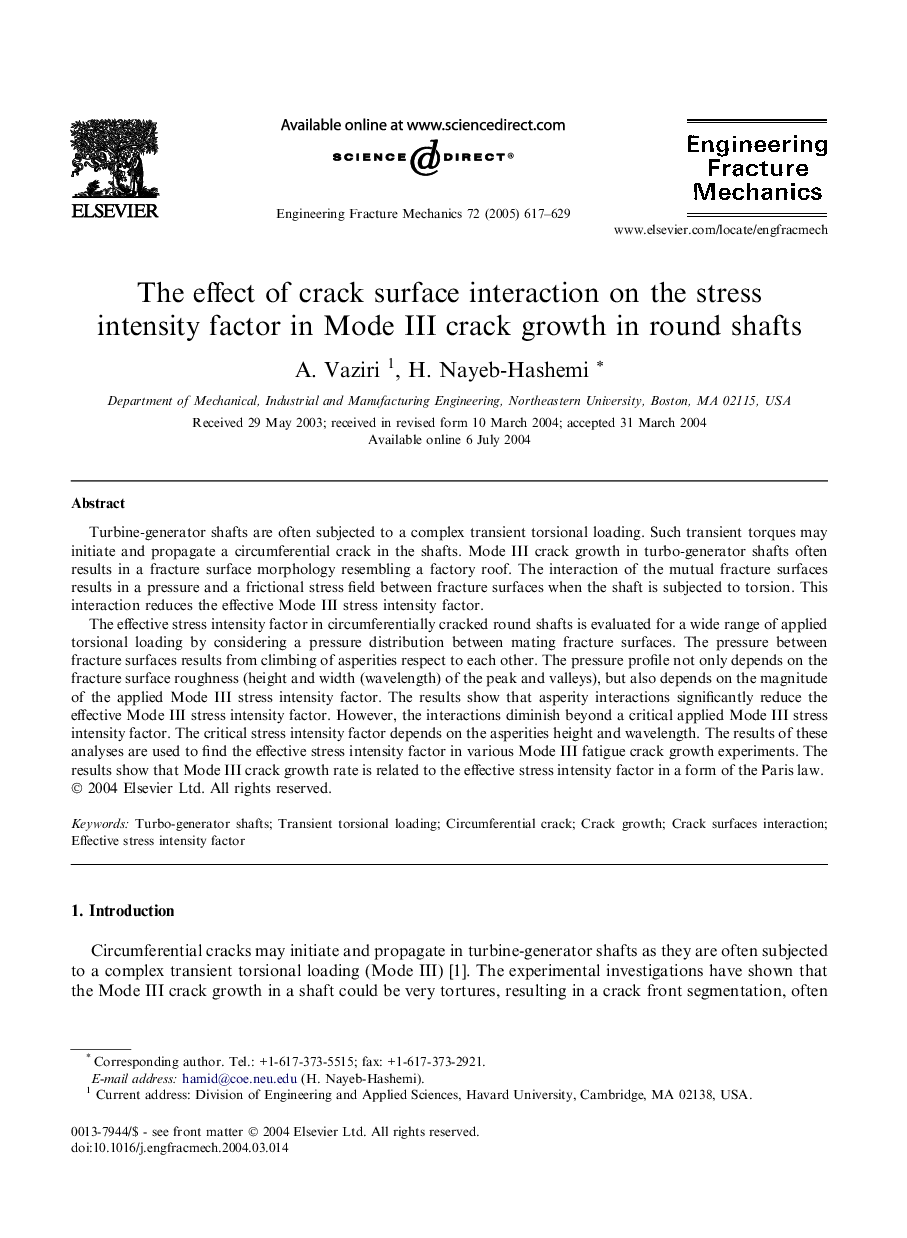| Article ID | Journal | Published Year | Pages | File Type |
|---|---|---|---|---|
| 10416312 | Engineering Fracture Mechanics | 2005 | 13 Pages |
Abstract
The effective stress intensity factor in circumferentially cracked round shafts is evaluated for a wide range of applied torsional loading by considering a pressure distribution between mating fracture surfaces. The pressure between fracture surfaces results from climbing of asperities respect to each other. The pressure profile not only depends on the fracture surface roughness (height and width (wavelength) of the peak and valleys), but also depends on the magnitude of the applied Mode III stress intensity factor. The results show that asperity interactions significantly reduce the effective Mode III stress intensity factor. However, the interactions diminish beyond a critical applied Mode III stress intensity factor. The critical stress intensity factor depends on the asperities height and wavelength. The results of these analyses are used to find the effective stress intensity factor in various Mode III fatigue crack growth experiments. The results show that Mode III crack growth rate is related to the effective stress intensity factor in a form of the Paris law.
Related Topics
Physical Sciences and Engineering
Engineering
Mechanical Engineering
Authors
A. Vaziri, H. Nayeb-Hashemi,
